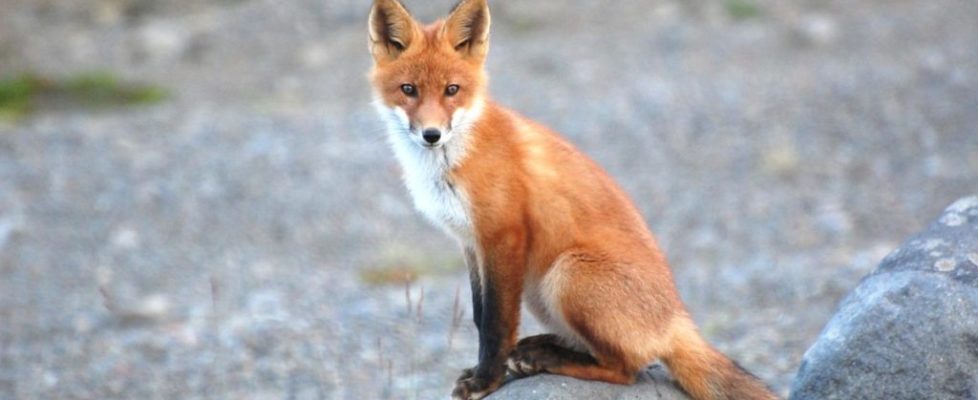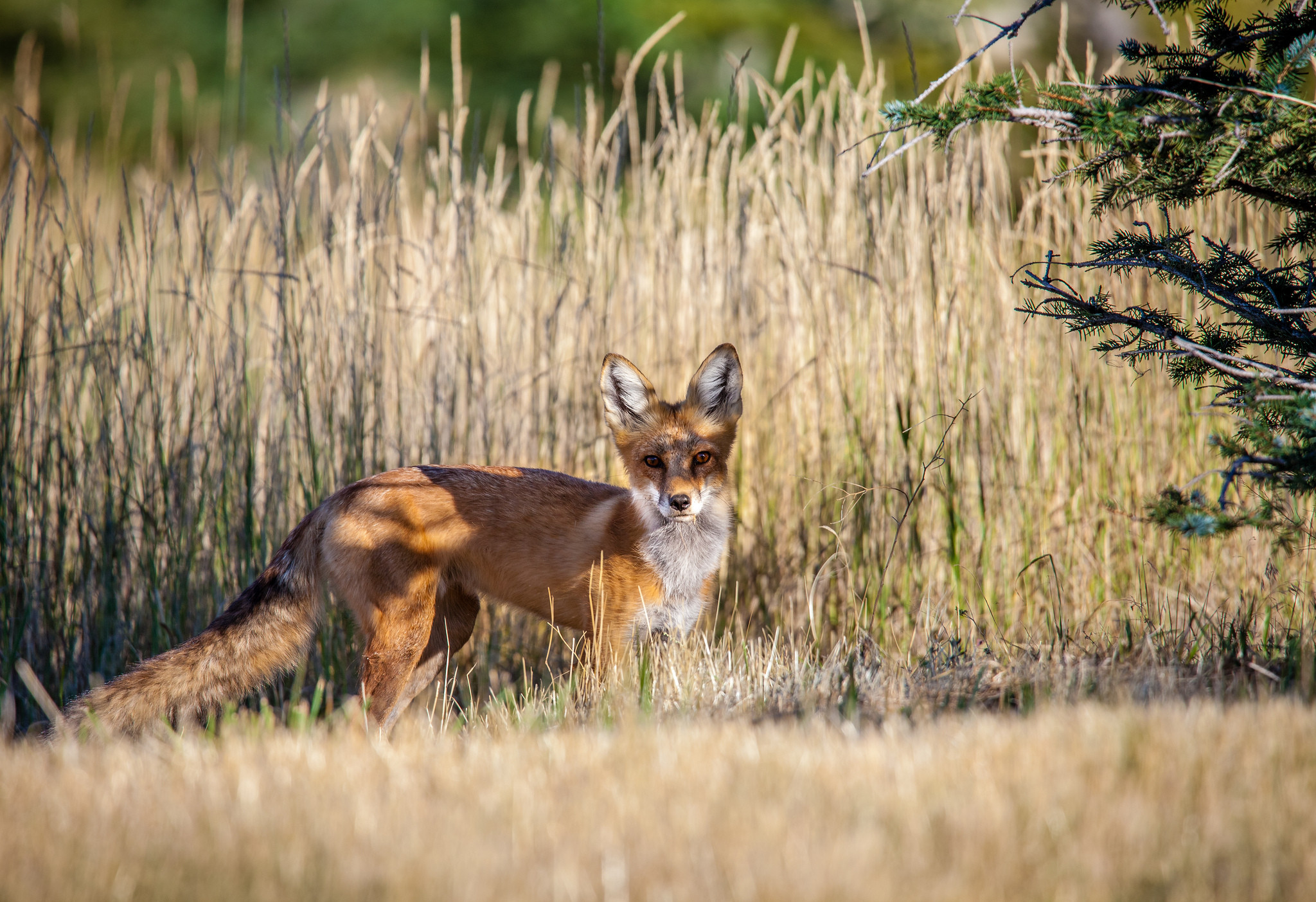The Red Shadow
A couple of weeks ago, my wife and I were taking a morning walk in Croton. It was a typically lovely spring morning on a beautiful village street, with birds singing and new leaves glowing in the sun. Then we saw something that didn’t seem to fit: a red shadow moving quickly and silently across a lawn and into a patch of woods.
A few mornings later, I was birding up near the model-airplane field in Croton Point Park. I stepped around a bend and glimpsed, at the far end of a clearing, a quick movement. A shape against the green, dark eyes gazing at me in surprise (“What are you doing here?”) before a reddish shape vanished into tall grass.
Then, a week or so later, I was attending a family reunion up on Cape Cod, and it seemed like red shadows were everywhere. Only now I could see they weren’t just quickly vanishing shapes, but Red Foxes. Out in the open, trotting along roads and through yards, so clearly a part of the landscape that I decided I had to write about them.
My sightings weren’t unusual. Red Foxes have always lived in the Northeastern U.S., but though populations fluctuate from year to year, it’s clear that the species finds our mix of woodlands, brush, lawn (and the prey such an ecosystem provides) very much to their liking. In this they join Eastern Coyotes, Black Bears, Bobcats, and smaller hunters such as Mink and weasels, all of which have learned to coexist with humans.
The Northeast is far from alone in being prime fox habitat. In fact, the Red Fox is the single most widespread mammal species on Earth besides humans. It ranges widely across most of Europe, temperate Asia, and North Africa as well as nearly all of North America.
The Red Fox is comfortable in a variety of habitats within this wide range, thriving in landscapes as varied as Arctic tundra and sere desert. It can even adapt to cities: In the U.K. alone, for example, scientists estimate the population of “urban foxes” (yes, they’ve been given their own category) at more than 30,000 animals. The sight of foxes on the streets has become routine for residents, if always startling at first for visitors.
What makes Red Foxes so adaptable? First, they’re skilled hunters of mice, voles, rabbits, small birds, and large insects, often capturing their prey with a high, four-footed leap and headfirst dive. (In winter, they’ll sometimes disappear entirely beneath the snow, only to emerge, triumphant, with their prey in their jaws.)
Fascinatingly, researchers have discovered that nearly all fox pounces are oriented towards the northeast, regardless of weather, wind, or other conditions. The theory: The animals use the earth’s magnetic field to help them pinpoint their prey, even when it’s under the snow or otherwise out of sight. If this proves true, foxes will be added to the list of animal species—which includes migrating birds, butterflies, and whales—that use magnetic fields to orient and direct themselves.
Red Foxes don’t even need to employ their full stalking and pouncing arsenal to find much of their food, especially in our area. In fact, like many domestic dogs, they’ll eat almost anything: eggs, fruit, carrion, grain (they especially love sunflower seeds, which means they’ll thank you for feeding the birds in your yard), leftover food from garbage cans and dumpsters, and pet food left outside.
Notoriously, they also like chicken. As a result, many farmers loathe the sight of a Red Fox, even though on balance foxes’ impact on rodent populations make them beneficial even around farms.
Another reason that foxes do well: Not much hunts them. They are preyed upon by Coyotes, especially the nearly wolf-sized coyote-wolf-dog hybrids that have spread across the Northeast in recent decades. It will be interesting to see if expanding Coyote populations will lead to a decline in fox numbers.
You’ll rarely see more than one or two Red Foxes at a time, for unlike wolves and many other canines, they don’t tend to run in packs. Both parents, however, help to raise the kits, and if you see a fox abroad during the day in the spring, it’s likely a parent hunting for food to bring back to a nearby den.
So what should you look for if you want to catch a glimpse of a “red shadow”? Don’t rely on spotting a vivid coat, because Red Fox coloration can be remarkably varied. The coat can range from a dark red to pinkish/orange, while black, brown, and silver/gray forms also exist. Many but not all individuals have a white tip to the tail, yet some (called “cross foxes”) have a black stripe down their back and another across their shoulders.
So the best advice is to keep an eye out for a medium-sized, agile, doglike creature with a fluffy tail moving quickly out of sight. (Red Foxes are usually 36-40 inches long, including the tail, and weigh somewhere between 10 and 15 pounds, so anything much larger is either a Coyote or a dog.)
Or you can listen for them. Red Foxes don’t bark, yip, howl, or bay at the moon. Their bone-chillingly loud call (usually made in the depths of night), sounds like a human scream. The cry is usually over something as mundane as a territorial dispute, but try telling that to your pounding heart after you’ve been woken out of a sound sleep at 3:00 A.M.
A long look, a quick glimpse, an empty bird feeder, or a scream in the night—they all remind us that we live alongside a sleek, complex, and endearing little predator. In an increasingly crowded world, that’s something to notice, and to celebrate.
Copyright © 2021 by Joseph Wallace




